The Smorgasbord
A sold-out Cook & Eat event in Portland highlighted the traditional Swedish Smorgasbord, inspired by Swedish chef Tore Wretman.
-
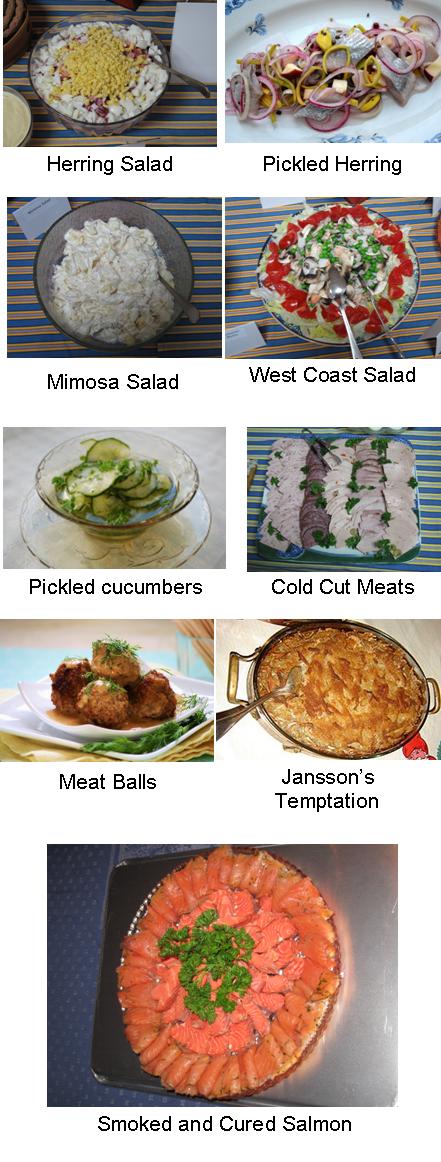 Smoked and cured salmon - gravlax, meatballs, Jansson’s Temptation, pickled cucumbers, mimosa Salad, pickled herring, west coast salad, herring salad, cold cuts
Smoked and cured salmon - gravlax, meatballs, Jansson’s Temptation, pickled cucumbers, mimosa Salad, pickled herring, west coast salad, herring salad, cold cuts -
-
Smörgåsbordet. By popular request in the Scandinavian community of Portland, a class called “How to plan and approach a Traditional Swedish Smörgåsbord” was held on October 24. It was part of the Scandinavian Heritage Foundation’s Cook & Eat program, which explores different aspects of Scandinavian cuisine.
-
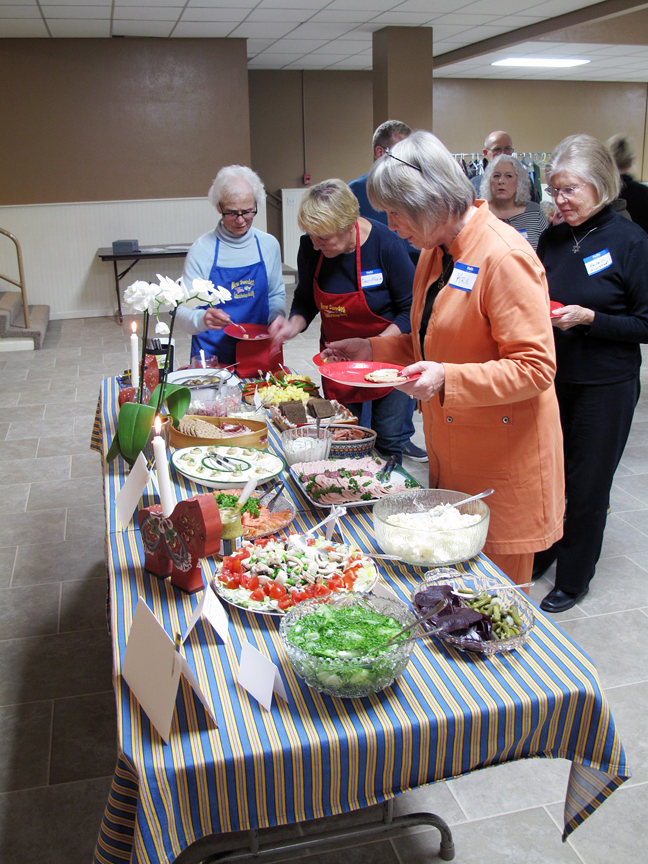 Carol and GunMarie guide the guests in planning a smörgåsbord table.
Carol and GunMarie guide the guests in planning a smörgåsbord table. -
-
All over the world, people associate the smörgåsbord with Swedish culture. Today, it is a well-known Swedish export according to the late chef and author Tore Wretman. However, the knowledge and skills in how to plan and prepare a smörgåsbord is disappearing with the older generation. The class in Portland offered a way to remind and inform people about the institution, including the overall importance of food in our traditions.
-
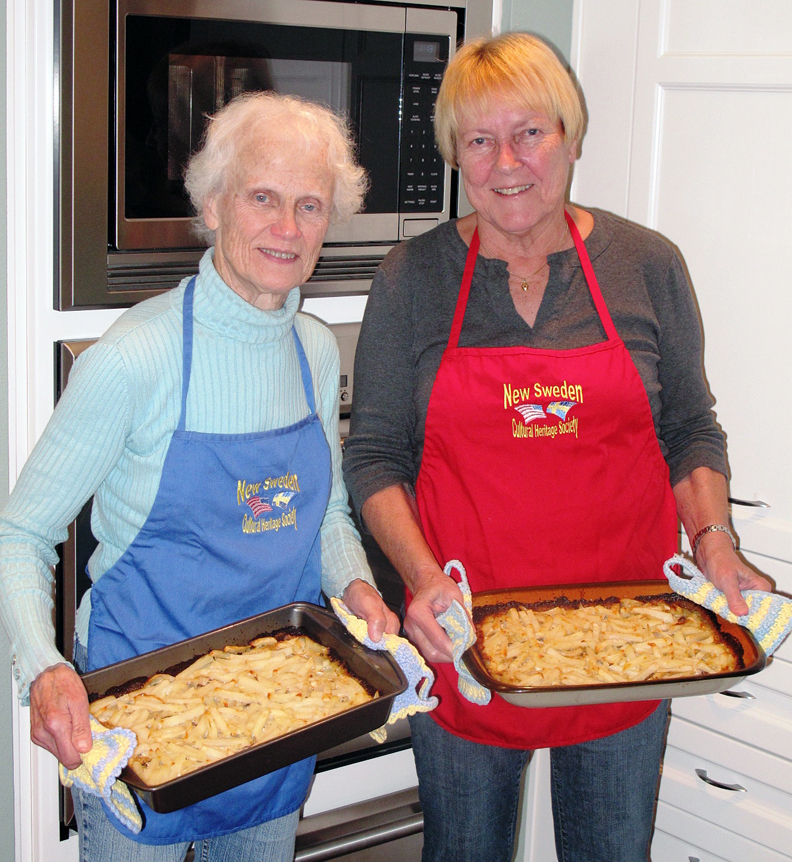 The Swedish chefs—Carol Tripp and GunMarie Rosqvist
The Swedish chefs—Carol Tripp and GunMarie Rosqvist -
When it comes to ways to approach a Smörgåsbord, Tore Wretman writes in his book: “The first and most important rule is to take your time, and to take small portions.” Carol Tripp and GunMarie Rosqvist totally agree, because the smörgåsbord consists of an abundance of different dishes.
GunMarie also shared her knowledge about the dishes and in what order they are most enjoyed. On the first plate should be several varieties of pickled herring, some hard cheeses served with cracker-bread and butter. The accompanying drinks are traditionally beer and snaps. In the second round you will find warm and cold smoked salmon, cured salmon (gravlax), eel, prawns and shrimp salad. Then follows a selection of cold cuts (sausages of different kinds, pâtés, head cheese, etc.), salads, pickled beets and cucumbers. After all this there are warm dishes, such as gratins, meatballs, Jansson’s Temptation and vegetables. The last round offers the sweet endings. After such a feast, a fruit salad, cake and some cookies are sufficient. Coffee and tea are served with the dessert. -
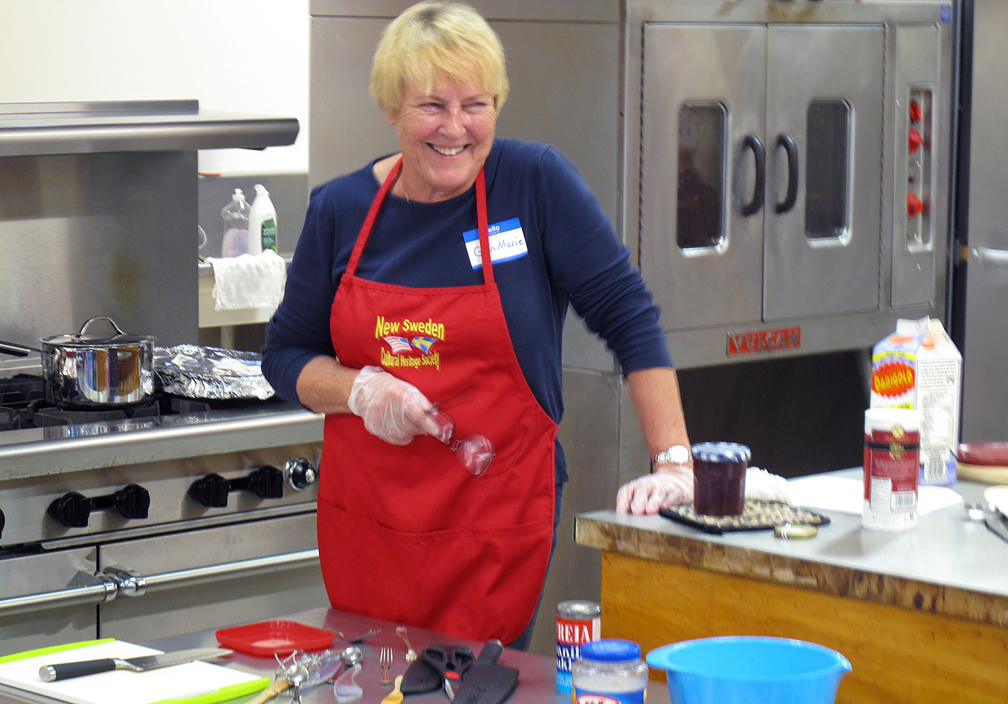 Every dish prepared with love and care - A rare quiet moment in the kitchen for GunMarie Rosqvist.
Every dish prepared with love and care - A rare quiet moment in the kitchen for GunMarie Rosqvist. -
Written by Leif Rosqvist, editor of the New Sweden Cultural Heritage Society and SRIO newsletters in Portland, Oregon.
For more information, search “Swedish Smörgåsbord” online
Tore Wretman's book, “The Swedish Smörgåsbord” (1983), is available on Amazon
Sample recipes from the event are available on New Sweden Cultural Heritage Society website, www.newsweden.org and general recipes at www.nordstjernan.com.
Nordstjernan’s book "God Jul – Recipes for a Swedish Christmas" offers all of the recipes, translated for the American home and modified to fit today’s lifestyle. -
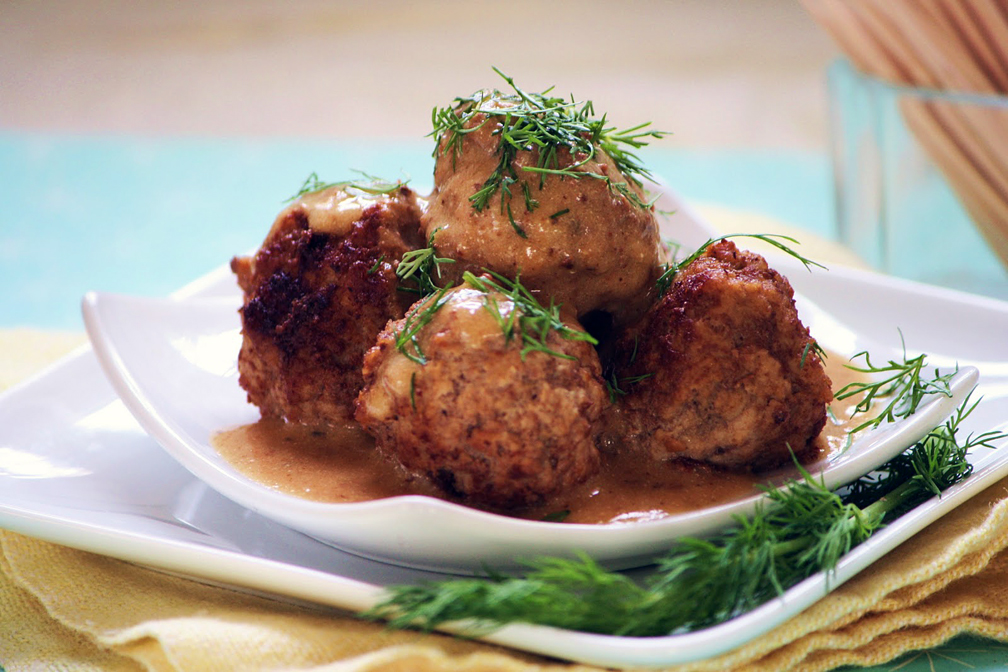 Swedish meatballs "köttbullar"
Swedish meatballs "köttbullar" -
Smörgåsbord = A combination of smörgås (open-faced sandwich) and bord (table). Smörgåsbord, spelled smorgasbord, made its international debut at the 1939 New York World's Fair when it was offered at the Swedish Pavilion's "Three Crowns Restaurant." It is typically a celebratory meal and guests can help themselves from a range of dishes laid out for their choice. In a restaurant, the term refers to a buffet-style table laid out with many small dishes from which, for a fixed amount of money, one is allowed to choose as much as one wishes. The most common variant on the theme is the julbord (Christmas table), the standard Christmas buffet which is served everywhere from family dinners to classy restaurants during the holiday season.
-
Smörgås consists of the words smör (butter, cognate with English smear) and gås. Gås literally means goose in Swedish, but according to Wikipedia, it also refers to the small pieces of butter that form and float to the surface of cream while it is being churned. These pieces supposedly reminded old Swedish peasants of fat geese swimming to the surface. The small butter pieces were just the right size to be placed and flattened out on bread, so smörgås came to mean buttered bread. In Sweden, the term "att breda smörgåsar" (to butter open-faced sandwiches) has been used since at least the 16th century.
-
-
